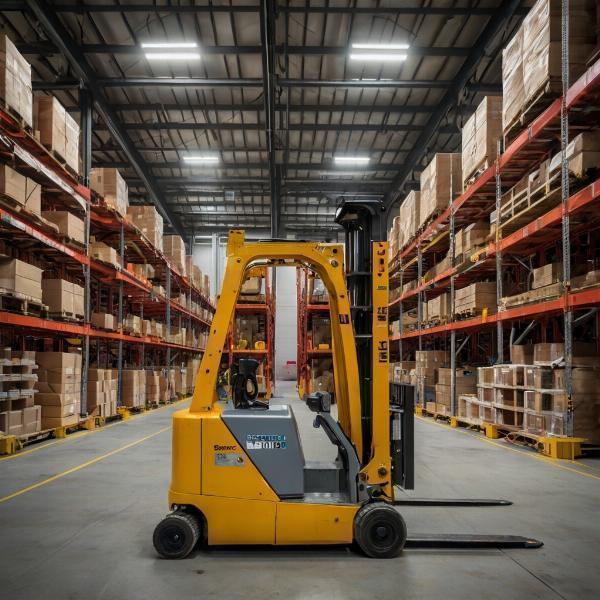Forecast for Automated Material Handling in 2024: Charting a New Course

Strong 8k brings an ultra-HD IPTV experience to your living room and your pocket.
As we move through 2024, the Automated material handling (AMH) industry is on the brink of remarkable transformation. This year, the AMH market is set to experience dynamic shifts driven by advancements in technology, evolving industry needs, and a heightened emphasis on sustainability. Here's a closer look at what to expect in the automated material handling sector over the next twelve months.
Technological Breakthroughs Shaping the Future
2024 promises to be a landmark year for technological innovations in AMH. One of the most exciting developments is the integration of advanced robotics and artificial intelligence (AI). Robotic systems are becoming increasingly adept at handling a variety of tasks with greater precision and efficiency. AI is at the forefront, enhancing these systems' capabilities to learn from data, adapt to new scenarios, and optimize operations in real-time. Machine learning algorithms will enable AMH systems to predict potential issues before they arise, reducing downtime and improving overall productivity.
The rise of the Internet of Things (IoT) will also play a pivotal role. IoT-enabled sensors and devices will provide valuable insights into operational performance, allowing for better decision-making and more responsive adjustments. This connectivity will lead to smarter, more integrated material handling solutions, where every component of the system communicates seamlessly.
E-commerce and Retail Demand
The e-commerce boom continues unabated, driving significant demand for automated material handling solutions. In 2024, businesses in the retail sector are expected to ramp up their investment in automation to keep pace with the ever-increasing volume of online orders. Automated picking and packing systems will be crucial in meeting customer expectations for quick and accurate fulfillment.
Robotic arms, autonomous mobile robots (AMRs), and advanced conveyor systems will become commonplace in warehouses and distribution centers. These technologies will not only speed up the order fulfillment process but also handle diverse product types and sizes with greater efficiency. The focus will be on creating systems that are flexible and scalable, capable of adapting to fluctuations in order volume and product variety.
Sustainability Takes Center Stage
Sustainability is no longer a secondary consideration but a primary focus in the AMH sector. As businesses face growing pressure to reduce their environmental footprint, there will be a shift towards eco-friendly material handling solutions. Automated systems designed with energy efficiency in mind will become increasingly popular. Electric-powered conveyors, energy-saving robotics, and sustainable materials will be at the forefront of this movement.
Companies will also prioritize practices that reduce waste and optimize resource usage. Automation will enable more precise control over material flows, reducing excess and enhancing recycling efforts. As regulatory frameworks around environmental impact tighten, adopting sustainable practices will become a critical component of business strategy.
Navigating Challenges and Seizing Opportunities
While the future of AMH looks promising, challenges remain. The initial cost of advanced automated systems can be significant, particularly for smaller enterprises. Additionally, integrating new technologies with existing infrastructure can pose difficulties. However, these challenges also present opportunities for innovation. Companies that offer affordable, scalable, and easy-to-integrate solutions will be well-positioned to thrive in this evolving market.
Investment and Market Expansion
Investment in the AMH market is expected to continue its upward trajectory. Beyond e-commerce and retail, sectors such as healthcare, automotive, and logistics are increasingly recognizing the value of automation. The demand for efficient, reliable material handling solutions is set to expand across various industries, driven by the need for enhanced productivity and operational excellence.
For More Info: - https://www.gmiresearch.com/report/automated-material-handling-ahm-market-analysis-industry-research/
Conclusion
The forecast for automated material handling in 2024 is filled with promise and potential. Technological advancements, a growing focus on sustainability, and evolving industry demands are set to drive significant changes in the sector. Businesses that embrace these trends and invest in innovative automated solutions will be well-equipped to navigate the complexities of modern supply chains and achieve long-term success. As the year unfolds, the AMH industry is poised to set new standards in efficiency and performance, marking a pivotal moment in its evolution.
Note: IndiBlogHub features both user-submitted and editorial content. We do not verify third-party contributions. Read our Disclaimer and Privacy Policyfor details.


